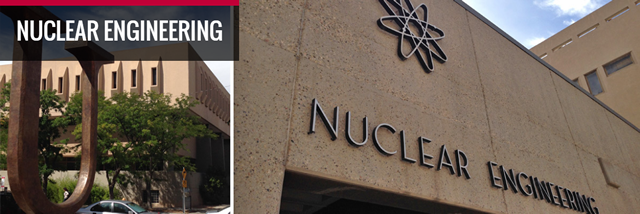
Nuclear Engineering ETDs
Publication Date
Fall 10-26-2017
Abstract
Deterministic numerical methodologies for solving time-eigenvalue problems are valuable in characterizing the inherent rapid transient neutron behavior of a Fast Burst Reactor (FBR). New nonlinear solution techniques used to solve eigenvalue problems show great promise in modeling the neutronics of reactors. This research utilizes nonlinear solution techniques to solve for the dominant time-eigenvalue associated with the asymptotic (exponential) solution to the neutron diffusion and even-parity form of the neutron transport equation, and lays the foundation for coupling with other physics phenomena associated with FBRs.
High security costs and proliferation risks associated with Highly Enriched Uranium (HEU) fueled FBRs are the motivation for this research. Use of Low Enriched Uranium (LEU) as fuel reduces these risks to acceptable levels. However, the use of LEU fuel introduces complexities such as, increased volume, and longer neutron lifetimes. Numerical techniques are sought to explore these complexities and determine the limitations and potential of a LEU fueled FBR.
A combination of deterministic and stochastic computational modeling techniques are tools used to investigate the effects these complexities have on reactor design and performance. Monte Carlo N-Particle (MCNP) code is useful to determine criticality and calculate reactor kinetics parameters of current and proposed designs. New deterministic methods are developed to directly calculate the fundamental time-eigenvalue in a way that will support multi-physics coupling. The methods incorporate Jacobian Free Newton Krylov solution techniques to address the nonlinear nature of the neutronics equations.
These new deterministic models produce data to determine LEU designs that may meet the performance requirements of proven HEU FBRs in terms of neutron burst yield and burst duration (pulse width) based on the Nordheim-Fuchs model. This computational data and measured performance characteristics of historical LEU FBRs show that LEU designs can generate pulses that are beneficial for meeting Research and Development (R&D) requirements. These modern computational neutronic results indicate that a LEU fueled FBR is a plausible alternative to current HEU fueled reactors.
Keywords
burst reactor, Newton Krylov, Jacobian, time-eigenvalue
Document Type
Dissertation
Language
English
Degree Name
Nuclear Engineering
Level of Degree
Doctoral
Department Name
Nuclear Engineering
First Committee Member (Chair)
Cassiano R. Endres de Oliveira
Second Committee Member
Adam Hecht
Third Committee Member
Barry D. Ganapol
Fourth Committee Member
Patrick J. McDaniel
Fifth Committee Member
HyeongKae Park
Recommended Citation
Hobbs, Edward L.. "Asymptotic Neutronic Solutions for Fast Burst Reactor Design." (2017). https://digitalrepository.unm.edu/ne_etds/72


